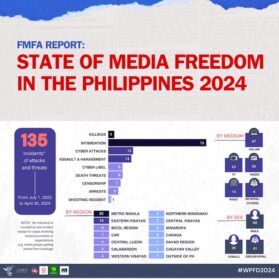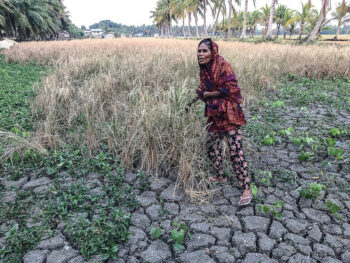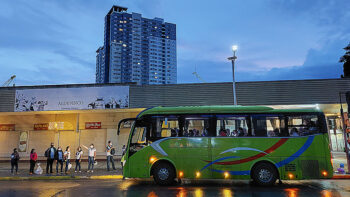
A Book Review
‘mBayuka Tanu! Maguindanaon Bayuk: Transcription, Translation, and Annotation
By Monsoor Limba
2022, Cotabato City: ElziStyle Bookshop
DAVAO CITY (MindaNews / 29 March) – It all began inside caves, the original abode of our prehistoric ancestors. When gathered at night around a blazing fire to keep them warm, a storyteller arose from among the band of itinerant hunters/food-gatherers. The stories ranged from their lived experiences in hunting to creation myths to the brave exploits of their recognized folk heroes among esteemed ancestors.
Storytelling would not surprisingly be considered an integral part of how our ancestors lived their lives from the dawn of humanity’s history. Migrating from across Africa to the rest of the planet, our ancestors would have brought along this practice along with the rudimentary ways of securing food or protecting their bands. When architecture had not developed to a primitive technology of building what would provide them shelter, caves would have served this purpose.
Most archeological findings today would date cave-dwelling way back to the Paleolithic period (roughly 2.5 million years ago to 10,000 B.C.), and there have been documentations done by archaeologists across Europe (especially France, Spain, Italy, Portugal, and Germany), in Asia, the Indian sub-continent, Africa, the Americas, and Australia.
Together with storytelling, cave art – consisting of engraved or painted works on open air rocks or on the floors, walls and ceilings of caves, some of them in deep and almost inaccessible crannies – flourished during the Upper Paleolithic period (40,000 to 10,000 BC). It was only in the 1860s that these were discovered.
Eventually, storytelling shifted from just the plain narrating of stories into an art form as the storytellers developed their confidence in extemporaneously constructing verses in both prose and poetry. Storytellers began to compete with each other to show-off who was the more accomplished poet-storyteller. Consequently, as their vocabulary evolved, the need to sound poetic would have led to the use of metaphors with nuanced symbolisms.
The art of storytelling then evolved into another level of art, namely, to chant or sing the verses oftentimes accompanied by musical instruments. The prehistoric era remains shrouded in mystery so we may never really know what sort of musical instruments were first used to accompany the chants and songs. However, music ethnologists like Alexandre Bartos and anthropologist Michael Boyd, provided some inkling into what were the first musical instruments used. The earliest ones found were in Ukraine that dates back 18,000 B.C.
One of the first were the bullroarers which were used in ceremonies, to communicate with different people groups across territories and even as toys. A bullroarer consists of a weighted airfoil (a rectangular thin slat of wood about 15 cm to 60 cm long and about 1.25 cm to 5 cm wide) attached to a long cord. During rituals, various other materials are used to produce hollow tones such as those produced by sea shells or mammoth husks when hollowed and blown, or flat stones when rapped.
Why storytelling? Most certainly, because there is satisfaction derived from hearing narratives as a form of enjoyment, entertainment, excitement, which can provide sensual and spiritual relief. Plus it provided them with knowledge about their past and ancestors, especially as these stories evolved into long epics. By telling stories they could ward off their fear of the dark, compensate for the excruciating slow movement of life in which few perceptible gains could be achieved in a whole lifetime.
With the passage of time, the practice and art of storytelling have since become an integral element of how humanity’s lived experiences and found their way to various enclaves or territories whose inhabitants are culturally or ethnically distinct. As much as various languages evolved across continents and locations leading to hundreds of ethno-linguistic communities, so also the forms and styles of storytelling.
For centuries, left to their own manner of maintaining kinship systems while setting up workable governance systems that guaranteed cooperation and survival, the ancestors of all these indigenous communities held on to their cultural identity and ways of life. Unfortunately the age of colonization vanquished their cultural identities and violated their sense of autonomy and sovereignty.
Propelled by the rise of Western civilization – occasioned by the Age of Enlightenment that gave rise to rationality, science, the industrial revolution, capitalism and urbanization – entire indigenous communities vowed down to the dictates of their colonial masters. In time their cultures were assimilated to those of their Western masters in the fields of education, ways of communication, and even faith traditions. If not for the resistance among those holding on to their agency to assert their struggle of self-determination, many of the indigenous cultural expressions would have disappeared.
Such is what has happened to our Moro and Lumad communities in this country, especially here in Mindanao. Which is why the work of a scholar like Mansoor Limba, whose book –‘mBayuka Tanu! Maguindanaon Bayuk: Transcription, Translation, and Annotation – was recently launched is a remarkable achievement. This proves that the Maguindanaons – through the efforts of the pababayuk or bayuk reciters or singers – have been able to preserve but also conserve an art form which is an integral element of Maguindanaon culture.
What is a bayuk (also spelled bayok)? In Robert Sullivan’s Dictionary, published by the Notre Dame University: “bayuk refers to a poem in song that relates a story, especially a love story, tone poem; enchanted poem.” Another scholar, Clemens Wein, defines it as “a song expressed indirectly by using many metaphors and proverbs… mostly used when singing about the most sensitive areas of love and religion.”
As Mansoor explains in the book’s Prologue, the bayuk “refers to a chant which is syllabic and tetrachordal. There are two categories of bayuks: as lyric poetry, proverbs and aphorisms and as chants or songs. As chanted repartee or story, bayuk usually encompasses such themes as praising a visitor or ruler, love affairs and marriage proposals, humorous and epic adventures, as well as notable events and innermost emotions.” In fact, even during the height of the Moro rebellion which led to outbreaks of violence and the subsequent evacuations, there were bayuks about such incidents.
The main achievement of Monsoor’s book is that it not only allows the Maguindanaoans access to bayoks that many – especially their own youth – may no longer be familiar with but also provides the non-Maguindanaoan reader with the English translation of the bayuks cited. It is therefore accessible to all Mindanawons interested in local or regional literature.
However, Mansoor goes further than just re-telling and translating the bayuks; he annotates them allowing the reader a knowledge of their contexts, or the stories behind the stories. We are then brought into an awareness of who are the pababayuks, their locations and the circumstances that led to their composing of their bayuks. As Mansoor asserts: “the bayuk translation maybe considered its flesh while the story behind it or its context may be its soul.”
The anthology contains the author’s Prologue and Epilogue, a Foreword by Datu Shariff Pendatun and 13 bayuks. As readers go through the pages of this book, those who are not familiar with the rich Maguindanaon culture are provided an introduction to the various facets of this unique cultural legacy as part of their intangible cultural heritage. These include being familiarized to their kinship systems (how relatives are referred to), ritual system (framed within the Islamic faith), cuisine and food preparation (e.g., difference between dudul and inti), their musical instruments (agong, kulintang, ganding), and other cultural forms.
The 16-page glossary is a virtual listing of important ethnographic data which doubles as an introduction to learning the Maguindanaoan language. Interesting to note that this language is truly a daughter of the Austronesian mother language but has also loan words from the Arabic.
Mansoor’s book merited praise from the Chair of the Committee for Writing Bangsamoro History under the ARMM, Robert Maulana M. Alonto, who posits: “Mansoor’s written work on Maguindanao bayuk merits not only our profound appreciation because such a work allows us to ‘rediscover’ in nostalgic context a wonderful tradition that bespeaks the richness of our cultural heritage, but also enthralls us with the inimitable artistic skills our ancestors communicated their stories by word of mouth in measured rhythmic tempo that have become an integral part of our indigenous traditional oral literature.”
Mr. Alonto and the whole bureaucracy of BARMM has a major challenge in their hands and they have been provided assistance by this book. If DepEd’s thrust to use the pupil’s mother tongues as medium of instruction for the first grades of basic education and incorporate local cultural materials, all schools covered by Maguindanaoans should make this book required text for teachers and students of higher years.
The BARMM governance structure should make sure this book is popularly disseminated to serve as antidote to our educational systems heavy reliance on foreign and Manila-based teaching materials. But colleges and universities across the country should make this book available as part of their required reading for students doing Philippine history and culture studies.
And may more of our youth among the Moro and Lumad communities be inspired to contribute to what is still a scant volume of local literature. Mansoor is one of our Mindanawon scholars who have done us this favor and may his tribe increase!
[MindaViews is the opinion section of MindaNews. Redemptorist Brother Karl Gaspar is a professor at St. Alphonsus Theological and Mission Institute (SATMI) in Davao City and until recently, a professor of Anthropology at the Ateneo de Davao University. Gaspar is author of several books, including “Manobo Dreams in Arakan: A People’s Struggle to Keep Their Homeland,” which won the National Book Award for social science category in 2012, “Desperately Seeking God’s Saving Action: Yolanda Survivors’ Hope Beyond Heartbreaking Lamentations,” and his latest, “Handumanan (Remembrance): Digging for the Indigenous Wellspring.”. He writes two columns for MindaNews, one in English (A Sojourner’s Views) and the other in Binisaya (Panaw-Lantaw). Gaspar is a Datu Bago 2018 awardee, the highest honor the Davao City government bestows on its constituents.]






